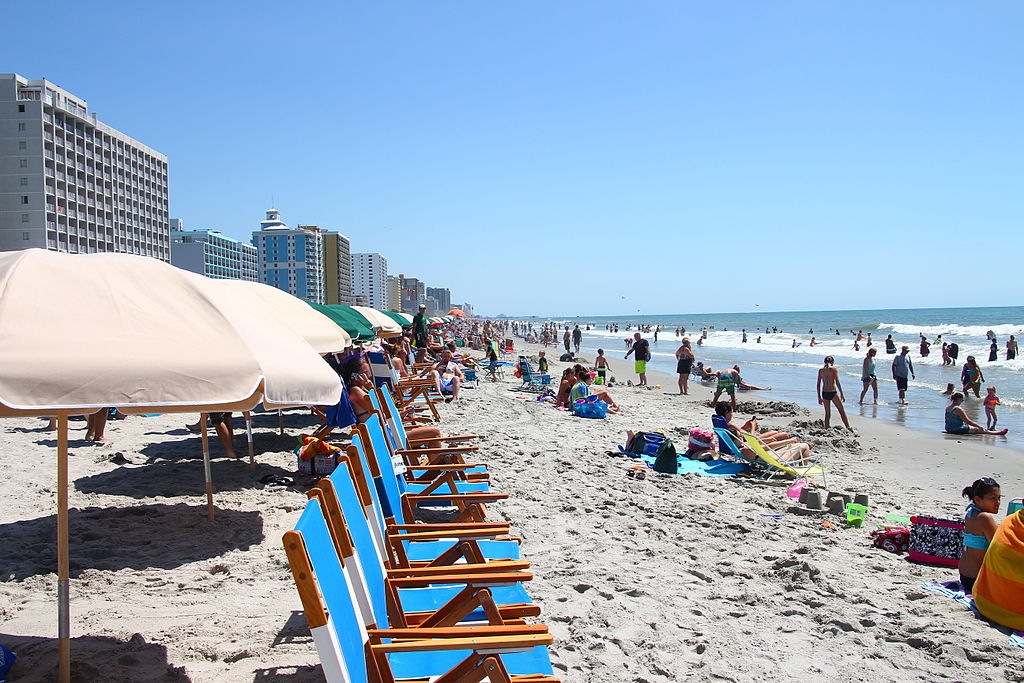
NEW YORK—Fall used to be off-peak for tourism everywhere except New England and other fall foliage destinations. But autumn tourism is rising, with traditional summer hotspots increasingly busy September through November.
For empty-nesters, baby boomers and others oblivious to school calendars, the appeal of a fall vacation includes hotel and airfare bargains, fewer crowds because kids are back in school and mild weather—with the exception of the occasional hurricane.
Lara Berdine and Mark Petrella, New Yorkers in their 40s, visit Italy each fall because “it’s cheaper, the weather is cooler and we can see the country as it really is, rather than in high season when it’s inundated with tourists,” said Berdine. “You find people are more relaxed in stores and everyone is in a better mood. I’ve been to Rome in the dead of summer and it was hell.”
Hilarye Fuller, a Knoxville, Tennessee, mom who writes a travel blog at DottingtheMap.com, figured a summer trip to Disney World in Florida would be “miserably hot and super crowded,” so she’s going in October. With kids ages 1, 3 and 5, “We don’t have to worry about school.”
Scott Berman, who analyzes the hospitality and leisure industry for PricewaterhouseCoopers, says September and October, when school’s back in session, have “historically been a slower period for leisure destinations. Not only are there fewer crowds, but it’s more economical.” And not just for U.S. travel: “You can fly to Paris for less than you would in July or August and get to see the Mona Lisa without crowds.”
But even traditional fall destinations say the season is getting busier. “Everything used to close on Columbus Day, and now the weekend after is one of the busiest, with the help of group tours trying to get foliage into their itinerary but at a little bit of a lower rate,” said Jayne O’Connor, president of the White Mountains Attractions Association in New Hampshire. Between Halloween events in October and Christmas-themed attractions opening in November, “many attractions are now staying open straight up until the ski areas open.”
The beach in fall
Myrtle Beach, South Carolina, just launched a campaign called “The Secret’s Out: 60 More Days of Summer” to attract visitors in September and October when “we still have summerlike conditions—very warm air temperatures and the water is still beautiful,” said Scott Schult, executive vice-president of the Myrtle Beach Area Convention and Visitors Bureau.
One reason some folks like the beach in fall? Dogs are allowed! “The dogs think they’re in heaven. You can even throw tennis balls in the water for them,” said Craig Conroy, 69, who lives near Pittsburgh and vacations every September on Assateague Island in Maryland and Virginia. He loves dining out in the area, too: “You get much better service because they assume you’re a native, not a tourist. The ticky-tacky carnival things on the Ocean City boardwalk might be closed, but what they don’t have open are things you don’t really want.”
Florida also reports more fall tourists, especially among overseas visitors, who increased 20 per cent October-December between 2011 and 2013. Panama City Beach’s lodging revenue is up 56 per cent for September and October since 2009. And while Labor Day in early September used to signal the end of Panama City’s tourist season, festivals—from beach concerts to pirate-themed parties—now attract visitors every fall weekend.
National parks and the West
Wildlife-viewing, foliage and cooler hiking weather have always fueled autumn tourism in the West, but some destinations report more fall visitors than ever. Yellowstone National Park had more than 500,000 September visitors for the first time in 2010, but they’ve topped 500,000 every September since. Regional fall attractions include trout fishing and the Rendezvous Royale, a September festival in Cody, Wyoming.
At the Zion Lodge in Utah’s Zion National Park, tourism used to slow by mid-October, but now it’s strong into November, according to lodge general manager Daisy Hobbs. An annual outdoor arts event, “In the Footsteps of Thomas Moran,” is part of the draw.
In New Mexico, September is nearly as strong as August, according to state tourism spokeswoman Jolene Mauer. The International Balloon Fiesta in Albuquerque brings another spike in October. Colorado’s golden aspens and elk-mating have long drawn fall visitors, but as elsewhere, the season keeps getting longer. A half-dozen years ago, luxury guest ranch Vista Verde near Steamboat Springs closed in late September, but this year there’s enough demand to stay open until Oct. 19.
Americans at home and abroad
Increased fall tourism is part of a larger recovery by the travel industry as the recession recedes. Hotel occupancy rates have inched up every September, October and November for the past four years, according to data from STR, which tracks hotel industry data. The U.S. Travel Association says the percentage of trips taken during fall has steadily increased from 23 per cent in 2008 to 26 per cent in 2012.
Fall trips to Europe and group tours are up, too. U.S. Tour Operators Association says some members report double-digit growth over last fall, like luxury operator Abercrombie & Kent, with sales up 25 per cent this September-November compared with 2013. David Rosner, co-CEO of smarTours, says the company’s “busiest months” are September, October and November.
More U.S. citizens have flown to Europe from the U.S. in September than in August for each of the past four years. Travel from the U.S. to Europe also increased each of the past four Octobers, according to Trans-Atlantic, an industry newsletter. Five years ago, Oceania Cruises ran its last trips in Europe at the end of October, but this year they’ll have ships there through mid-November.
Barbara Golden of St. Augustine, Florida, says she was disappointed when booking her fall trip to the Rocky Mountains to find few bargains in hotels and car rentals. “I guess,” she said, “the secret’s out.”